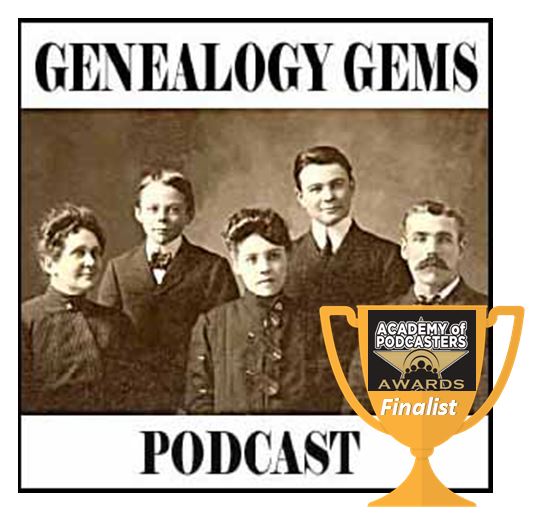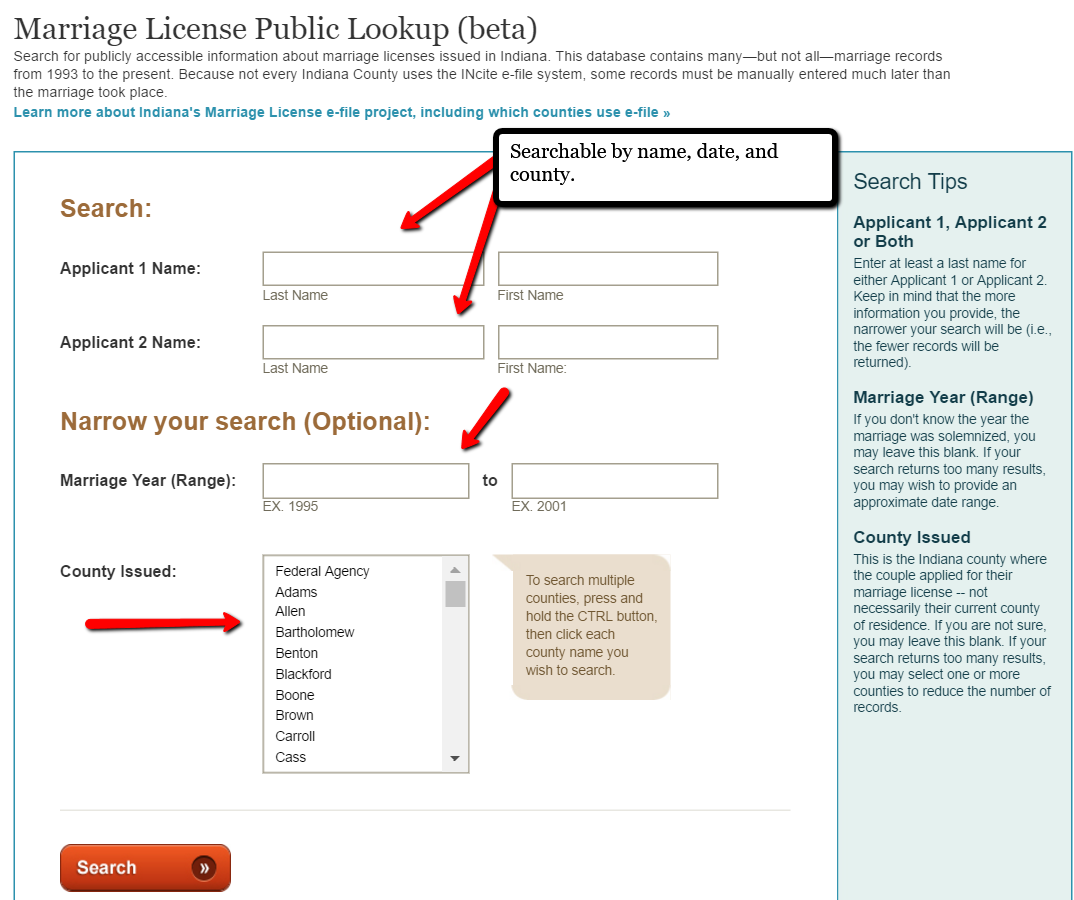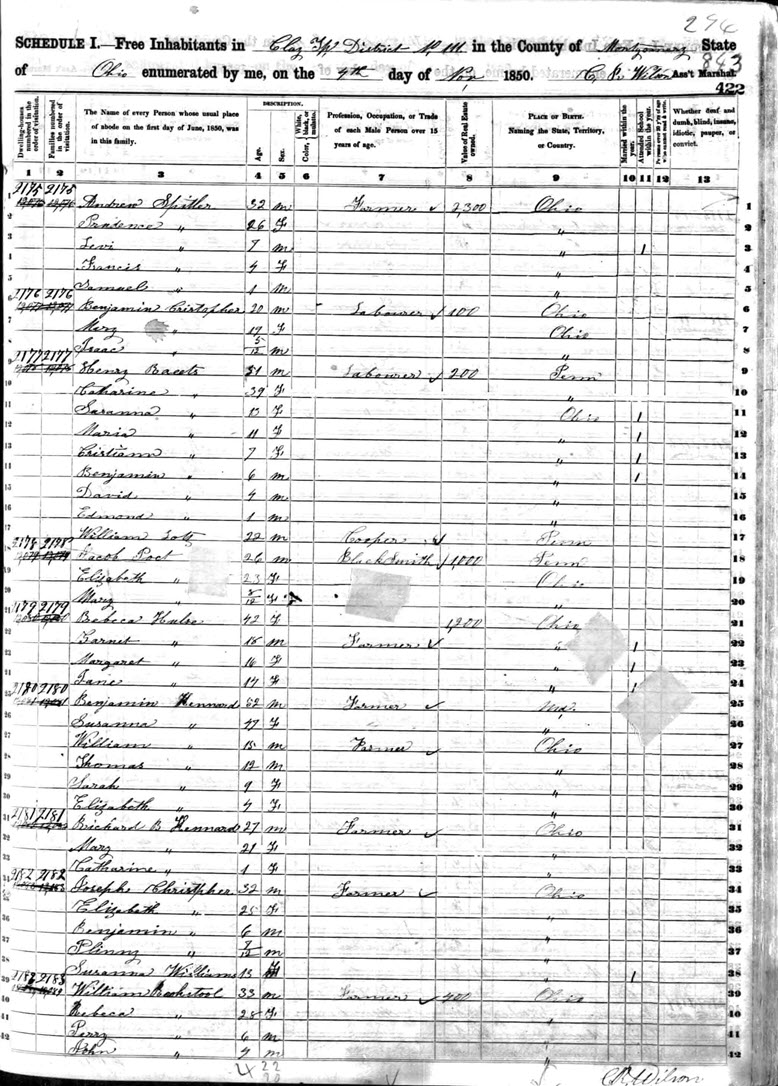NEW Genealogy Gems Book Club Title: Pioneer Girl (Laura Ingalls Wilder)
 When Lisa and I were young we read the “Little House” series of children’s books about growing up on the western U.S. frontier. These books continue to shape the way Lisa and I imagine our ancestors’ lives during that era. Well, the “grown-up” version of the Little House series has finally been published!
When Lisa and I were young we read the “Little House” series of children’s books about growing up on the western U.S. frontier. These books continue to shape the way Lisa and I imagine our ancestors’ lives during that era. Well, the “grown-up” version of the Little House series has finally been published!
Pioneer Girl: The Annotated Autobiography of Laura Ingalls Wilder, edited by Pamela Smith Hill, is our newest Genealogy Gems Book Club. It’s the never-before-published autobiography Laura wrote in the 1930s. The stories and memories she shares in it are the basis for her popular Little House children’s series.
Across the cover of a dime store paper tablet, Laura scrawled “Pioneer Girl.” Then she filled it with detailed recollections of family, and neighbors, wagon trains and homesteads. In other words, memories of pioneering in an American West that was fading away. Her stories will intrigue–and sometimes stun–any Laura Ingalls Wilder fan.
In the Book Club announcement in Genealogy Gems Podcast Episode 181, I asked Lisa what makes this book a standout and a prime candidate for genealogists. Her answer? “The immaculate research that went into it. The stunning example it sets for source citations, which consume large portions of most of the pages. And the often never seen before photos sprinkled throughout that bring the people and times to life visually for the reader.”
Look for more on Pioneer Girl in the coming two months on the Genealogy Gems podcast and website. In September, Genealogy Gems Premium members will get to enjoy Lisa’s full interview with editor Pamela Smith Hill. We’ll play an excerpt on the free Genealogy Gems podcast.
 Want to see more great titles we’ve recommended? Click here to access the Genealogy Gems Book Club, with best-selling titles: fiction, memoir, history and family histories. OR click here to see our growing list of how-to genealogy titles we love and have featured on Genealogy Gems in the past.
Want to see more great titles we’ve recommended? Click here to access the Genealogy Gems Book Club, with best-selling titles: fiction, memoir, history and family histories. OR click here to see our growing list of how-to genealogy titles we love and have featured on Genealogy Gems in the past.
Genealogy Gems Podcast Nominated! Academy of Podcasters Award
 We’re so pleased we just had to tell you our great news….The Genealogy Gems Podcast has been nominated for the first-ever Academy of Podcasters Awards!
We’re so pleased we just had to tell you our great news….The Genealogy Gems Podcast has been nominated for the first-ever Academy of Podcasters Awards!
Ten nominees were named in each category by The Academy of Podcasters in an event expected to become annual, according to the Academy website. We were chosen “by a combination of input from the Academy, the board, and from other podcast rating services.” The Genealogy Gems Podcast was nominated in the “Parenting, Family and Kids” category.
Podcaster and comedian Colt Cabana will host the actual awards show on July 31, 2015 at the Omni Fort Worth in Forth Worth, Texas. It’s not far from home and I hope to stop by to celebrate on my way home from speaking at the BYU Family History Conference!
 In case you’re not already a listener….The FREE Genealogy Gems Podcast, our flagship “online radio show” with 1.75 million downloads, helps you make the most of your family history research time by providing quick and easy-to-use research techniques. As the producer and host, I do my darndest to bring you the best websites, best practices, and best resources available for genealogy!
In case you’re not already a listener….The FREE Genealogy Gems Podcast, our flagship “online radio show” with 1.75 million downloads, helps you make the most of your family history research time by providing quick and easy-to-use research techniques. As the producer and host, I do my darndest to bring you the best websites, best practices, and best resources available for genealogy!
Listening has never been easier because now you can easily stream podcasts on your smartphone or tablet in addition to listening online at our website or in iTunes. To listen on your mobile device, just get the Genealogy Gems app for iPhone or iPad and Android. To learn more about the show or read FAQ, click here.
Try our other podcasts, too:
- Family History: Genealogy Made Easy, a free step-by-step series for new or starting-over genealogists
- The Genealogy Gems Premium Podcast, a monthly in-depth news and how-to show with MORE great interviews, tips and tricks. This is available as part of our annual subscription package, which also includes a year’s access to a full range of genealogy education videos.
Thank you Academy of Podcasters!
How to Find Recent Genealogy Records That Are Not Online Yet

Records that have been created recently are difficult to find and access. Some privacy laws protect, and hinder, our being able to find more recent birth, marriage, and death records we need. Here are some tips for finding these and other genealogy records not yet online.
Recently, Tom in Olympia, Washington wrote us with a question about how to find recent genealogy records that are not online yet.
“My wife’s mother was adopted in 1925. We have found her biological mother’s name and through Ancestry.com, I’ve found several bits of information about her from census records. She also was a crew member on three steamships in the 1930s. On two of the ship manifests, her U.S. passport numbers are listed. Do you know any search options for finding information from passports in the 1930s?”
Maybe you have had a similar question. We hope our answer helps everyone more easily find genealogical records that are not online yet.
Obtaining Recent Passport Application Records
Tom will be interested in obtaining a passport application record which may hold more information about his targeted ancestor. As Tom already discovered, U.S. passport records are online at Ancestry and FamilySearch, but only those records prior to 1925.
My original hope was that the National Archives Records Administration would have had the passport application records for the 1930s. I googled passport applications National Archives, and the first search result took me to an excellent article. I learned the U.S. State Department has passport applications on microfilm between the years and dates of 1795 to 1905 and January 2, 1906 – March 31, 1925. Sadly, these were not the years Tom was looking for.
To find information about passport applications in the 1930s, I needed to go another route. I opened a new window and googled U.S. State Department passport applications request copy. The first search result took me right to the page I needed. The Passport Services maintain the U.S. passport records from 1925 to the present. These records are protected by the Privacy Act of 1974.
Passport records in this time frame for a third-party person are processed under the Freedom of Information Act. These records need to ordered by mail. Tom can make a request in writing and send that request to:
U.S. Department of State
Office of Law Enforcement Liaison
FOIA Officer
44132 Mercure Cir
P.O. Box 1227
Sterling, VA 20166
I suggested he mention his desire for the information is for genealogical purposes and what his relationship is to the person in question.
Using the Same Strategy for Other Recent Genealogy Records
Remember, this same kind of strategy applies to other genealogical records you might be looking for that were created recently. You can use Google searches and follow-up phone to find out where more recent records are and the access policies.
As an example, a recent Indiana marriage license index can be searched and viewed online for free at the Public Access records website for the state. I found this little goody by googling Indiana marriage records.

All of us at Genealogy Gems adore having the opportunity to find and share solutions like this one for overcoming the problem of locating recent genealogy records that aren’t online. If you haven’t done so already, sign-up for our weekly newsletter for more tips and tricks. Oh, and write to us anytime with your genealogy questions! We love to hear from you!
More Gems on Recent Genealogy Records

Other recent genealogy records in the U.S. are also available via the provisions of the Freedom of Information Act (FOIA). Click here to read about them! They include post-World War II draft registrations, immigration and naturalization documents and Social Security applications (SS-5).
Are You a Cookie Cutter Genealogist?
Two of my favorite things, cookies and genealogy, have more in common than you might think! Follow me down this genealogy rabbit hole and discover how you can take you family tree further!

Cookies for My Descendants!
My grandson loves Super Mario games and specifically the mascot Mario. (Actually both of my grandsons do!) So, when it came time to create a sweet treat for his birthday, I opted for sugar cookies decorated as Mario.
Normally I would use a cookie cutter to create a decorated character cookie. Unfortunately, the local craft stories didn’t carry the Mario cutter, and I didn’t have time to get it ordered and delivered.
I hit a cookie decorating brick wall.
But brick walls, whether in genealogy or cookie decorating can often be overcome.
When we come face to face with a brick wall, we need to assess the situation, seek additional advice, and assemble the appropriate tools.
In the case of ole Mario, I first found a drinking glass just slightly larger than the size I wanted the cookie to be. It worked well as a cookie cutter, but I later decided to improvise a cookie cutter of my own.
To create the cookie cutter, I copied an image of his face into a Word document, and then enlarged it to the size of a cookie and printed it out on a sheet of paper. I carefully cut the image out, and then placed the cut-out on a sheet of wax paper, drawing around the edges and then cutting it out.
Next I found a good, sharp paring knife. I placed the wax paper template on the rolled-out cookie dough and carefully cut around it with the paring knife. Brick wall busted!

The finished cookies for my grandson’s birthday
Are you a cookie cutter genealogist?
All this cookie cutting and problem solving got me thinking about genealogy. (Ok, I admit it – I’m always thinking about genealogy!) It brought to mind an email I received just the other day from a listener, Kristine, who described herself as a “cookie-cutter” researcher.

Hi Lisa,
I just retired and guess what is first on my list of things I WANT to do? 🙂 I jumped in with both feet listening to your Premium podcasts and realized a few times that I am the ‘cookie-cutter’ researcher. But, no more. You are the Captain of my ship now. Thank you!
After binging on your podcasts the last two weeks, the first bit of advice I took was changing the way I searched on Newspapers.com. My family’s everyday life’s treasures were buried in the pages of the local news! You made me take a second look after I dismissed the possibility of ever reading about them.
Thank you so much for your dedicated work on behalf of all the genealogists. My Premium subscription will NEVER run out. When a family member says “I don’t know what to get you” I’m prepared to solve that dilemma!
A listener for life
Kristine
I really admire how Kristine took an honest look at her current research techniques. She was open to acknowledging that she had more to learn. It’s just icing on the cake for me that she started listening to the Genealogy Gems Podcast.
It’s easy to become a cookie-cutter genealogist in today’s automated world.
Every day more and more is being done for us automatically. Genealogy record hints and matches on genealogy websites is just one example. These can be very effective tools, but they can also lull you into a false sense that the work is done or correct.
An accepted record hint can in no way be considered as work that is done or correct. It is only the beginning.
In Genealogy Gems Podcast episode #232 professional genealogist and lecturer Elissa Scalise Powell and I discussed the pitfalls of “shallow research,” or as Kristine described it, being a “cookie-cutter” researcher.
Elissa says that while we will find a lot of “low-hanging fruit” in the early days of our genealogical search, there always comes a time when we need to dig deeper. All genealogists will need to stretch and reach for other sources. These types of sources are:
- not straightforward,
- possibly unknown to you at this time,
- not easily accessible,
- time-consuming to explore,
- take study to understand it,
- not self-explanatory.
Moving Beyond Cookie Cutter Genealogy
I also recently I received a question from a reader that provides a great example of a scenario where it’s time to move on to these rich and yet more challenging sources. Harold writes:
I have a totally “back to basics” question.
Since I started seriously doing genealogy about 8 months ago, I’ve learned a tremendous amount about my ancestors…families going back as far as those covered in the 1850 census and since then.
But once you get to the 1840 census and earlier, I do not understand how any genealogist can use the meager records in the census, that only identify the head of the family and the number of adults and children living in the household, to any sense prove that they are your ancestors, or to find their predecessors who are likely to have lived in another state.
After all, in those days, often maiden aunts, grandparents, and others stayed with families, so you can never be sure who all the people are.
And they had a dozen kids, not all of whom survived.
So you cannot count on just the “number” of people listed in the 1840 census to prove anything. Even worse, my ancestors, and I think most people’s, seemed to be moving westward every generation from the establishment of the colonies, so there are dozens of states to choose from, and hundreds or thousands of people with the same surnames in them.
I believe I have found the name of my great-grandfather on an 1840 census in Ohio (though it is possible it is just a duplicate name), but there is no telling where he lived in 1830 or earlier.
As far as I can tell, my ancestors were all poor dirt farmers, moved westward every generation, and didn’t have any records of stores or businesses they might have owned that would have those kinds of records. Yet, there are people who claim they can trace their ancestry back to the Mayflower and the like, but I do not understand how anyone can legitimately trace their ancestry back prior to 1840 unless they have something like a family Bible or similar transcription kept in the family.
Sure, you can find names on earlier census, but lots of people have the same name, and lots of names are spelled wrong, etc. and there are a lot of states and territories to choose from.
So how can ANYONE claim they can PROVE their ancestry from 1840 and before?
The “cookie cutter” Harold was using was the U.S. Federal Census. Cookie cutters provide great, consistent results, but over the decades the census cookie cutter shape changes. The check marks don’t provide the same level of details that we find in later enumerations.
For example, the 1850 U.S. Federal Census provided the name, age, and gender of everyone in the family. It also provided valuable and identifying information such as occupations and place of birth.

Information provided on the 1850 U.S. Federal Census
Just ten years earlier, the 1840 enumeration looked dramatically different:

1840 U.S. Federal Census
As Harold lamented, in 1840 we only find the name of the head of household, followed by the number of people in the household who fell within a certain age range. There’s still valuable information here, but clearly not as detailed as later enumerations.
So, the general answer to his question is that he is right, from 1840 on back you typically cannot rely just on census records.
However, it is indeed often possible to reliably take your family tree further back in time.
Genealogical research at this point in history requires deeper cross-referencing of the types of sources that Elissa referred to in the podcast episode. Examples of these sources include wills and probate records, land deeds, homestead records, tax records, marriage records, old newspapers, compiled genealogies and more. They all play a part in piecing together a family tree.
Some of these records are available online. However, in many cases, you will use only the internet to help you determine where the records are held. Then you must access the records in person, by contacting the repository, asking a friend or fellow researcher in the area to copy it for you, or hire a professional genealogist in the area where they are held.
Regarding Harold’s question regarding genealogists who are able to tie their family tree to the Mayflower, this is indeed possible. There is a lot of excellent documentation over the last few centuries on descendants of the Mayflower, so it is sometimes not that difficult to connect up an ancestor in your own tree with the descendant of the Mayflower. This can indeed take your own tree back much further. However, that’s a topic for another article.
A Sweet Tool that Can Help
In addition to discussing the sources and strategies that you can use to avoid being a cookie cutter genealogist, Elissa and I also discuss the Genealogical Proof Standard (also known as the GPS) in Genealogy Gems Podcast episode #232.
The Genealogical Proof Standard was created to help genealogists gain confidence in their research conclusions by providing criteria that can be followed. A genealogical conclusion is considered proved when it meets all five GPS components.
You can learn more about the GPS in episode #20 of my Family History: Genealogy Made Easy podcast.
Sweet Rewards
It’s normal for new genealogists to follow the basic cookie-cutter approach of birth, marriage, death and census records. But these standard sources can only take you so far (as Harold discovered!)
Reaching further back in your family tree by embracing more challenging sources and digging deeper offers a much sweeter reward!



